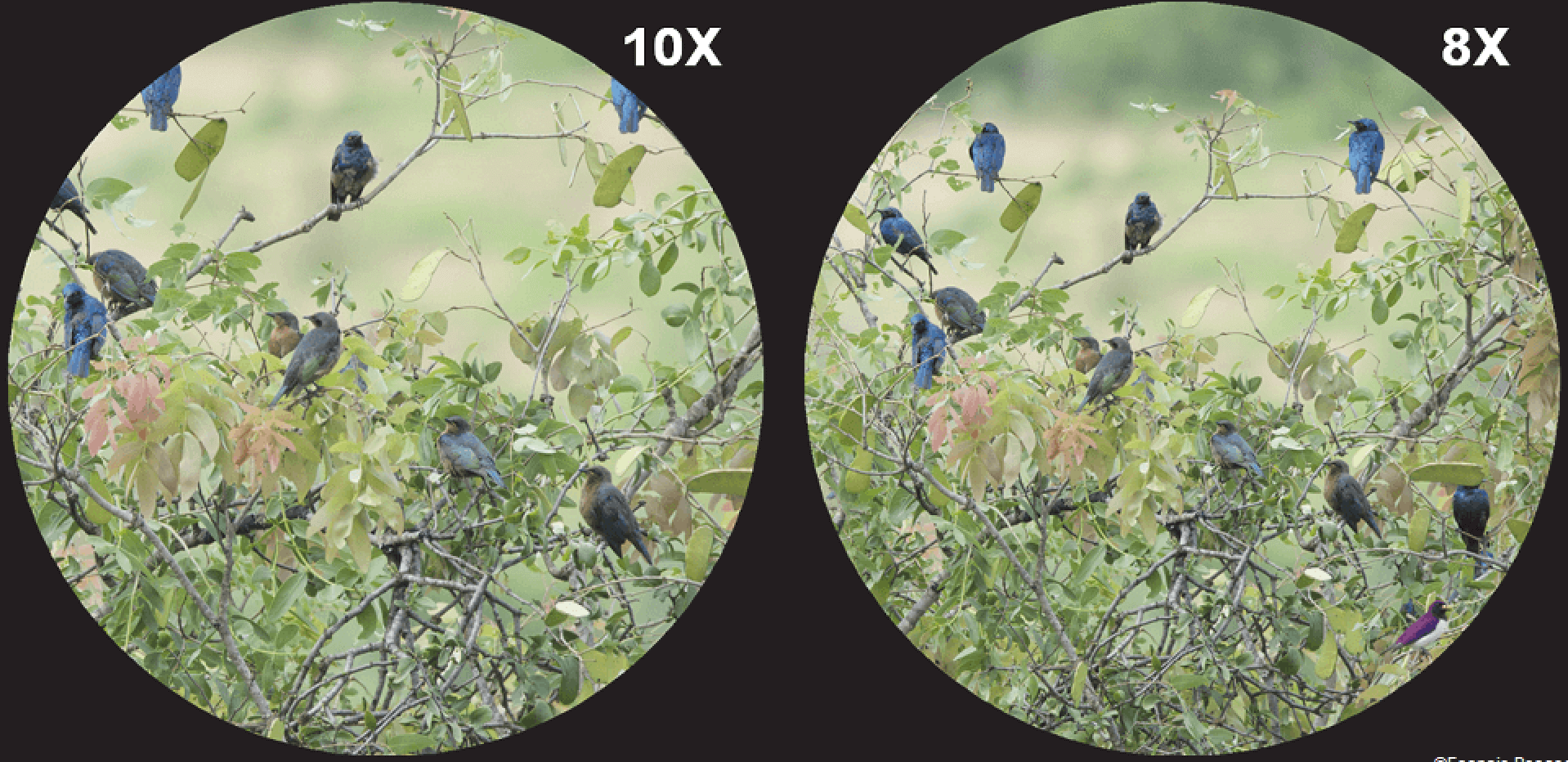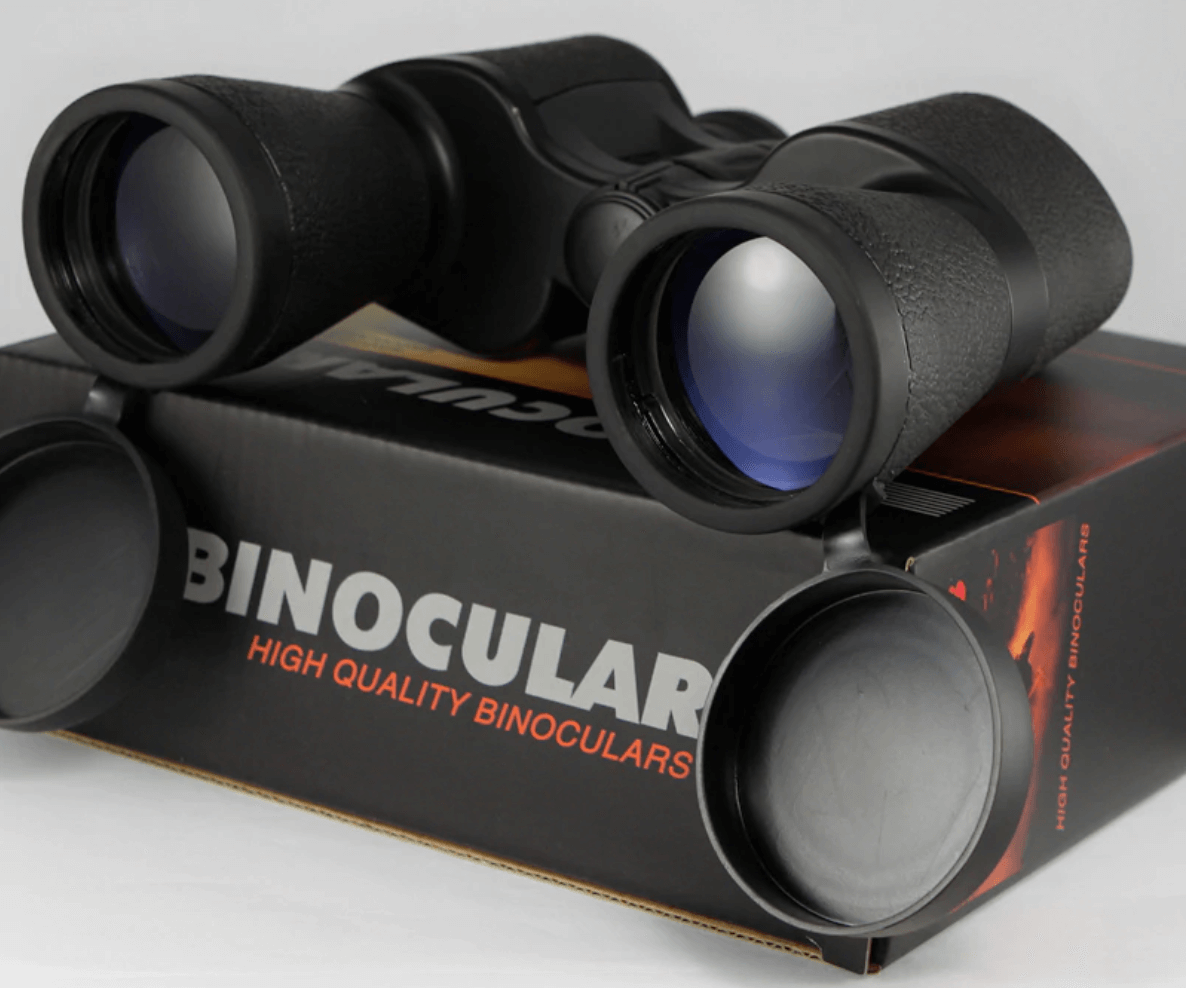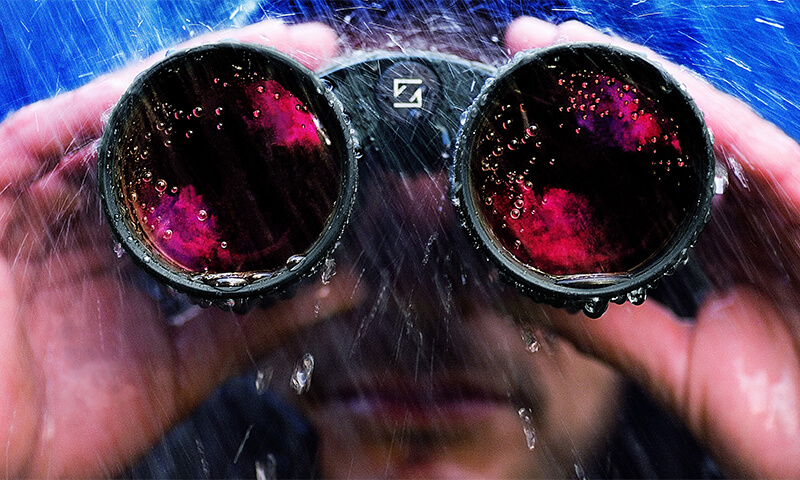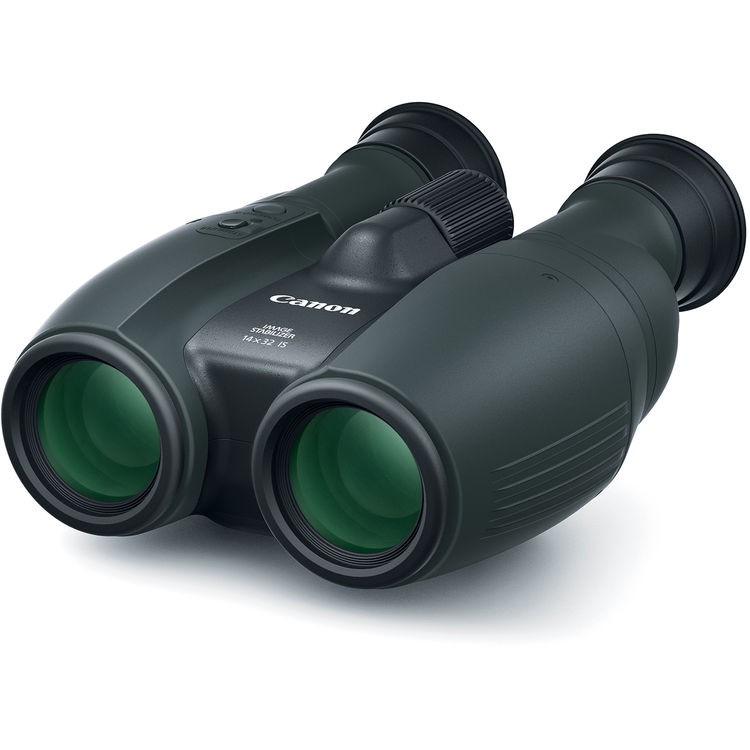8×42 vs 10×42 Binoculars. Which is Best?
Contents
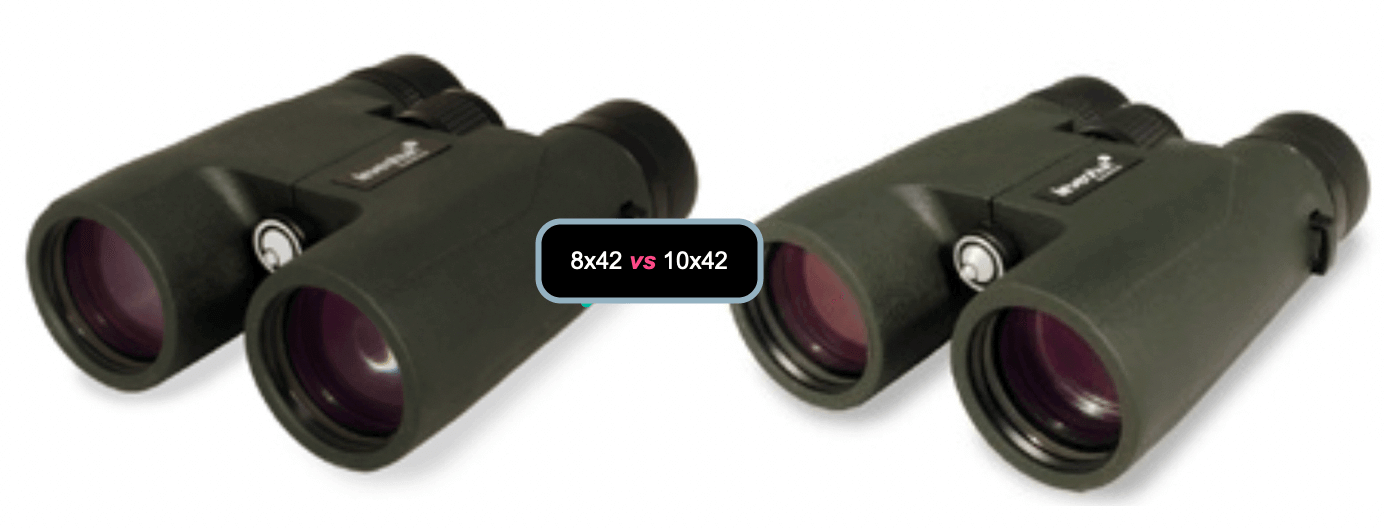
I recently completed two articles in which I discussed main differences between 10×42 and 10×50 binoculars and 16×50 and 20×60 binoculars.
This time I want to discuss 8×42 and 10×42 binoculars because these optical instruments are the most popular devices.
In this post I will be comparing two Levenhuk binoculars, 8×42 vs 10×42 so you can see the difference and decide which one is more suitable for you.
I will do my test and research to understand the difference between these two binoculars and share my thoughts.
Let’s do the research to understand how these two binoculars perform and which one is better.
- Levenhuk Karma Pro 8×42
- Levenhuk Karma Pro 10×42
Common for 8×42 and 10×42 Binoculars
First of all, let’s see what these two binoculars have in common. Both binoculars have the same magnification power. Both binoculars are roof prism devices.
Both binoculars have multi-coated optics, have same dimensions and 42 diameter objective lens. Even weight of these two optical instruments is almost the same.
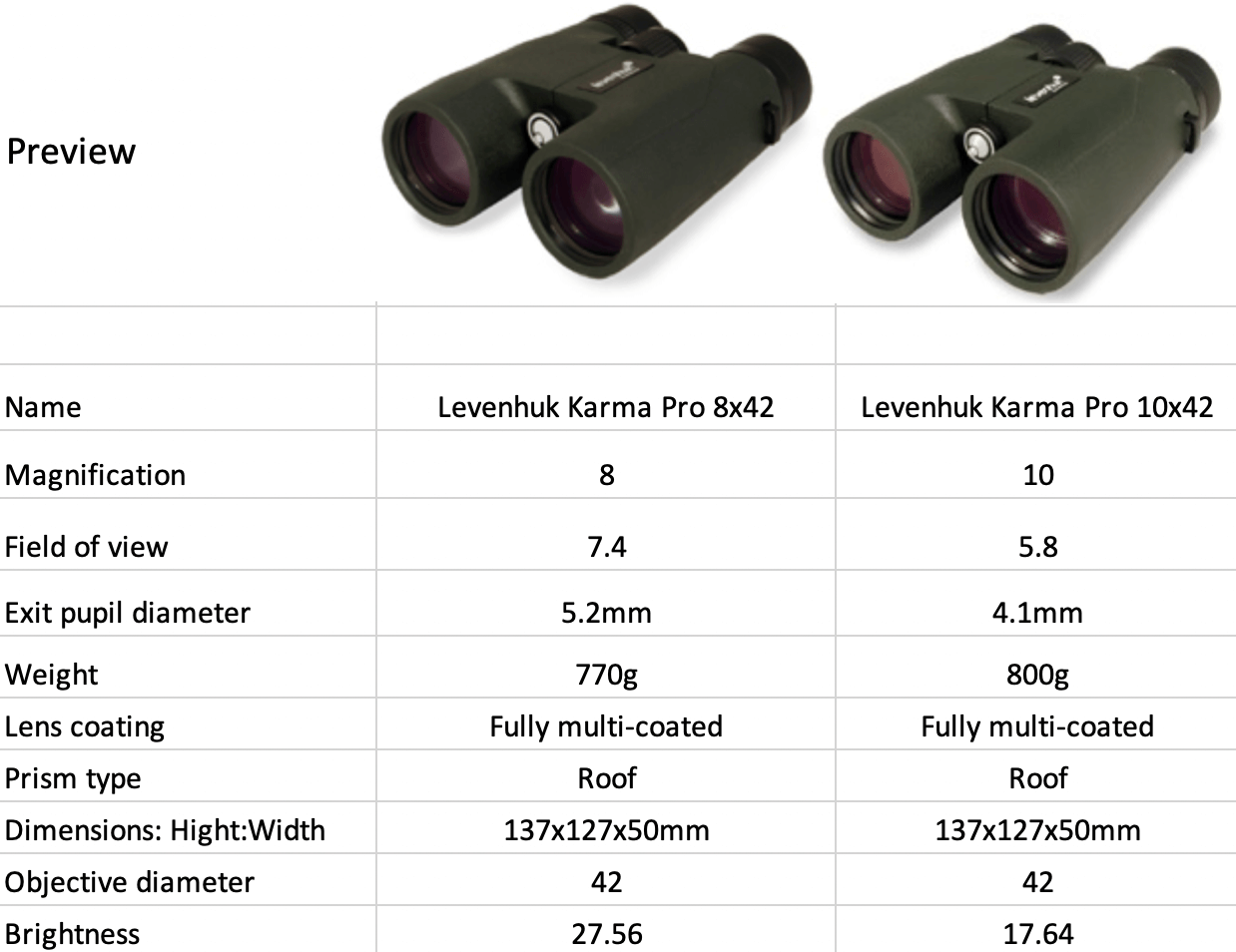
8×42 and 10×42 Binoculars
Both types of binoculars 8×42 or 10×42 are pretty powerful devices.
They can be used almost for all types of outdoor activities or even indoor activities if you plan to use binoculars at home.
You can easily take such binoculars when traveling, for hunting, terrestrial observations, sporting events, bird watching.
For astronomical observations they are not so suitable but for observing Moon it may be suitable.
The only main difference between these two binoculars is the diameter of the objective lens. In fact, there is no huge difference between these two binoculars.
The only difference is that binocular with magnification 10 has a little heavier objective lens. The difference is very insignificant.
Compared to other binoculars for example, 10×42 and 10×50, the difference in weight affects image stability. When it comes to 8×42 vs 10×42, image stability is almost the same.
Also, it should be noted that my test binoculars are both roof prism binoculars which means they are pretty lightweight and image stability will be good.
Because image stability is very important aspect when choosing optical instruments.
Since image stabilization binoculars are very expensive, we need to be careful when choosing optical devices.
8×42 and 10×42 binoculars are the best optical instruments in terms of the balance between magnification power, ease of use, weight and field of view.
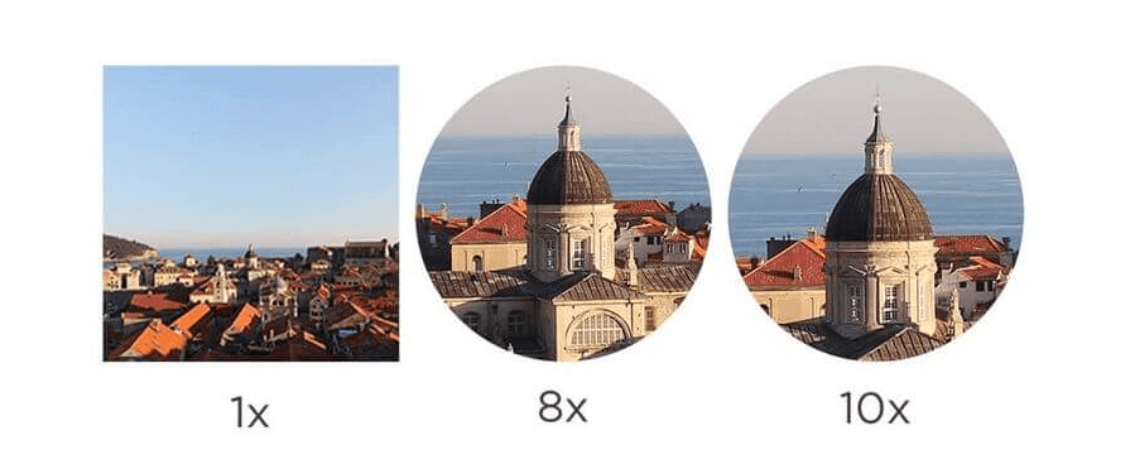
Magnification
As mentioned above, binoculars with magnification 8 and 10 are the most often used and bought.
It’s an optimal choice in many respects, such as magnification power, field of view and ease of use thanks to an optimal weight and size.
If you plan to buy any of these binoculars, selection is really huge. You can find an excellent optical device for a reasonable price.
Image quality
Image quality in binoculars is the most important aspect. As we know, the higher the magnification the worse is the image quality.
Magnification higher than 15 already starts to cause certain image blur issues.
I mean in terms of image clarity and brightness binoculars with magnification 15, 20 or 25 are very different from binoculars with magnification 8,10 or 12.
The less the magnification the higher is the image quality. In our case, magnification 8 and 10 are absolute winners.
If we compare image quality in both binoculars 8 and 10, both binoculars produce almost the same image quality. Image is bright, crystal clear and sharp.
Image brightness is better in Levenhuk Karma Pro 8×42 than in Karma Pro 10×42.
Image brightness in 8×42 is 27.56 while it’s only 17.64 in Levenhuk Karma pro 10×42.
27.56 vs 17.46 is a significant difference in image brightness. This means image in Levenhuk Karma Pro 8×42 is brighter than in Levenhuk Karma Pro 10×42.
During daylight it may not be so noticeable while at night or low-light conditions it becomes noticeable.
If you plan to use binoculars mostly in low-light conditions you better choose Levenhuk Karma Pro 8×42.
If you plan to use binoculars during daylight then Levenhuk Karma Pro 10×42 would be an ideal choice.
But by this I don’t mean that Levenhuk 10×42 is not suitable for night observations.
It’s a perfect binocular suitable for various activities and it will perform very well even in low-light conditions.
I just want to explain that Levenhuk Karma Pro 8×42 has a brighter image and will perform better in low-light conditions.
That’s why if you plan to use it primarily at night then 8×42 will be a better choice.
Levenhuk Karma Pro 8×42
- Image Brightness – 27.56
Levenhuk Karma Pro 10×42
- Image Brightness – 17.64
Field of view
Field of view in binoculars is also important especially if you plan to use an optical instrument for specific activities.
Because wider field of view means seeing more objects around when looking through binoculars.
In high power binoculars with magnification power 15 or 20, field of view is significantly narrower than in binoculars with magnification 7,8,10 or even 12.
In Levenhuk 8×42 and 10×42, field of view is pretty wide.
Such binoculars can be used for multiple activities, such hunting, safari, at stadiums, bird watching, terrestrial observations and more.
But Levenhuk Karma Pro 8×42 has a wider field of view than Levenhuk Pro 10×42.
If you want more powerful magnification then 10×42 would be a great choice because it’s powerful and field of view of 5.8° is pretty wide and suitable for most activities.
If field of view is your priority then Levenhuk 8×42 would be a better choice especially for hunters and bird watchers.
Because 8×24 Levenhuk has field of view 7.4° which is a bit wider than in Levenhuk 10×42.
On paper 7.4° vs 5.8° looks like a big difference but in practice when you look through binoculars, I can’t say the difference is big. See the screenshot.
- Field of view of Levenhuk Karma Pro 8×42 – 7.4° (390 feet / 1000 yds) – 2mm exit pupil
- Field of view of Levenhuk Karma Pro 10×42 – 5.8° (305 feet / 1000 yds) – 1mm exit pupil
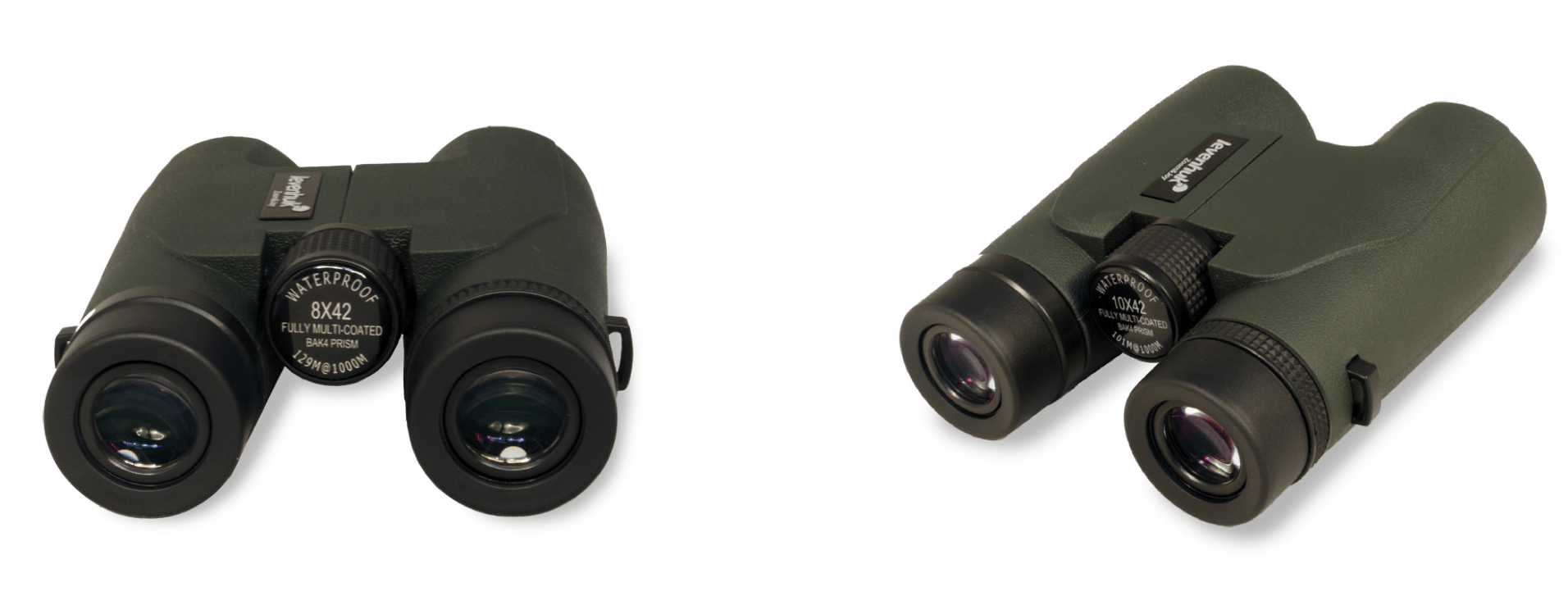
Weight
Weight of an optical instrument is another important aspect when choosing binoculars.
Because it impacts image stability which affects your overall experience with an optical device.
We know that high power binoculars with magnification 20 or 25 are bulky and must be used with a tripod.
Without tripod your will experience serious image shake.
Second solution to this problem is buying image stabilization binoculars that have a special mechanism that stabilizes the image and compensates your hand trembling.
As a result, you get a steady image which gives you a great experience.
When it comes to binoculars with magnification 8 or 10, in our test Levenhuk Karma Pro 8×42 and Levenhuk Karma Pro 10×42, these optical devices are lightweight and image stability is acceptable.
When it comes to comparison between 8×42 and 10×42 Levenhuk binoculars, 8×42 is a little more lightweight than 10×42.
But the difference is so insignificant that I think this aspect is not important at all in our case. But theoretically 8×42 is a winner.
Practically speaking, image stability is the same.
But sometimes when you compare two same binoculars from different brands, one that is made of plastic or or polycarbonate chassis will be significantly more lightweight than binocular that has a metal chassis.
- Levenhuk Karma Pro 8×42 – 770g
- Levenhuk Karma Pro 10×42 – 800g
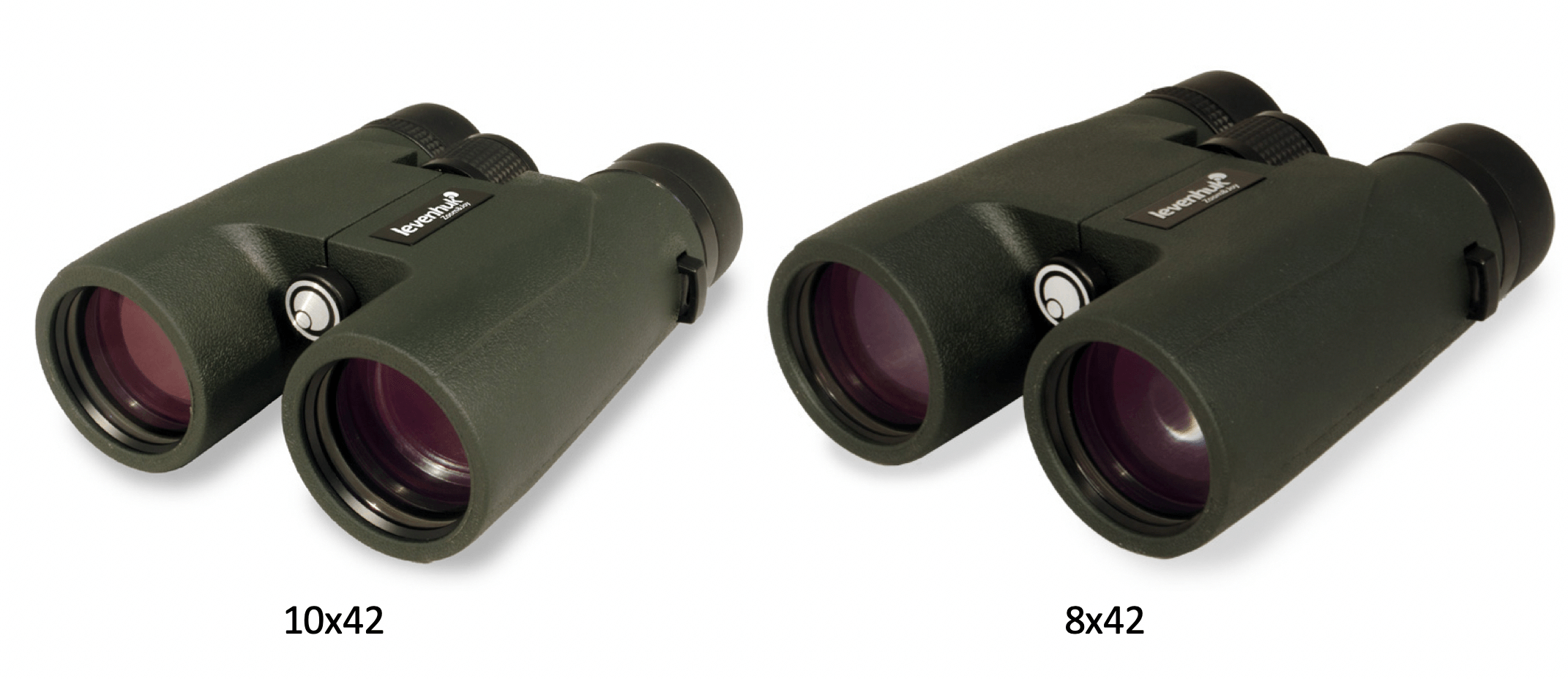
Size
Size of these binoculars is the same which means they are equally easy to hold in hands.
Binoculars barrels are not different because diameter of objective lens is the same in both binoculars, 8×42 and 10×42.
But if you compare roof binoculars with porro prism binoculars, porro binoculars are always bigger in size.
So, if size of an optical instrument is your priority then you need to choose roof prism binoculars.
In our case Levenhuk 8×42 and Levenhuk 10×42 are no different.
Levenhuk Karma Pro 8×42
- Dimensions – 137x127x50
Levenhuk Karma Pro 10×42
- Dimensions – 137x127x50
Who is a Winner?
Speaking about 8 and 10 magnification binoculars and especially Levenhuk Karma Pro 8×42 and Levenhuk Karma Pro 10×42, I think both optical instruments perform equally well and suitable for various activities.
Both binoculars have a wide field of view, excellent image brightness, stable image and suitable for multiple activities.
Levenhuk 8×42 outperforms Levenhuk 10×42 in the image brightness and wider field of view.
As I mentioned above, Levenhuk 8×42 is more suitable for low-light conditions while Levenhuk 10×42 is more suitable for daylight conditions.
If you need maximum power from an optical instrument and want a better view of distant objects, you better choose 10×42. It will satisfy most of your needs.
If you use binoculars for bird watching you probably need wider field of view and Levenhuk 8×42 will suit your needs better.
Or if you plan to use binoculars in low-light conditions again 8×42 will perform better thanks to a brighter image.
It’s really hard to say which binoculars is a winner.
Each optical instrument has its advantages suitable for various groups of people. Price difference is insignificant.
- Winner in image brightness: Levenhuk Karma Pro 8×42
- Winner in field of view: Levenhuk 8×42
- Winner in weight: Levenhuk 8×42
- Winner in size: Both
- Winner in magnification: Levenhuk Karma Pro 10×42
Winner: Levenhuk 10×42 thanks to a more powerful magnification
Winner: Levenhuk 8×42 thanks to a brighter image and wider field of view
Levenhuk Karma Pro 10×42 area of use: hunting, safari, general use
Levenhuk Karma Pro 8×42 area of use: stadiums, hunting, bird watching, safari, general use,

